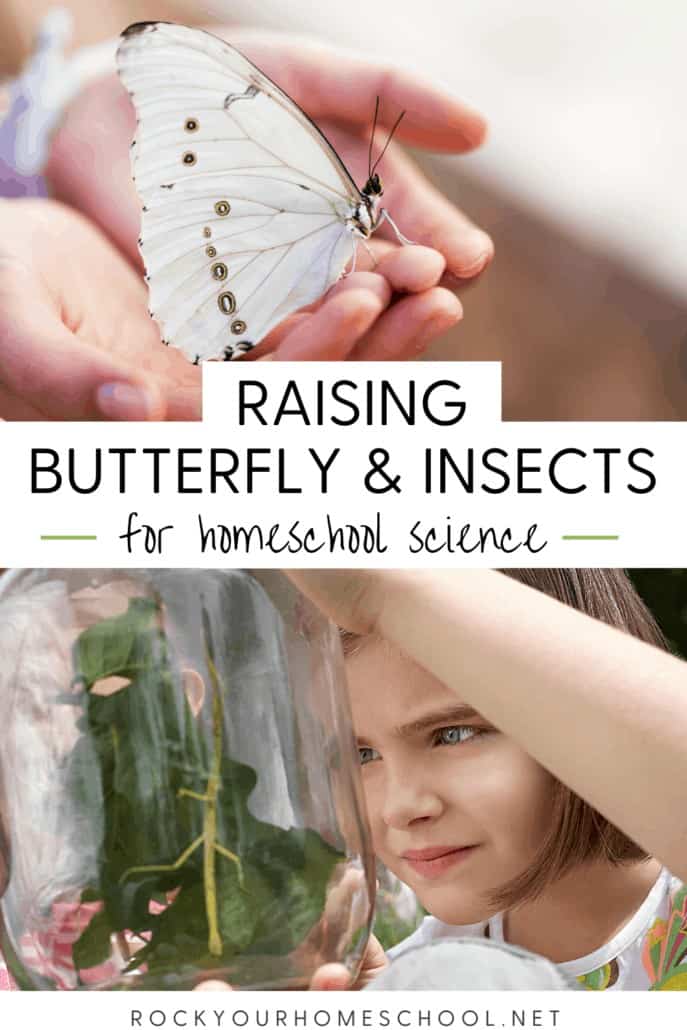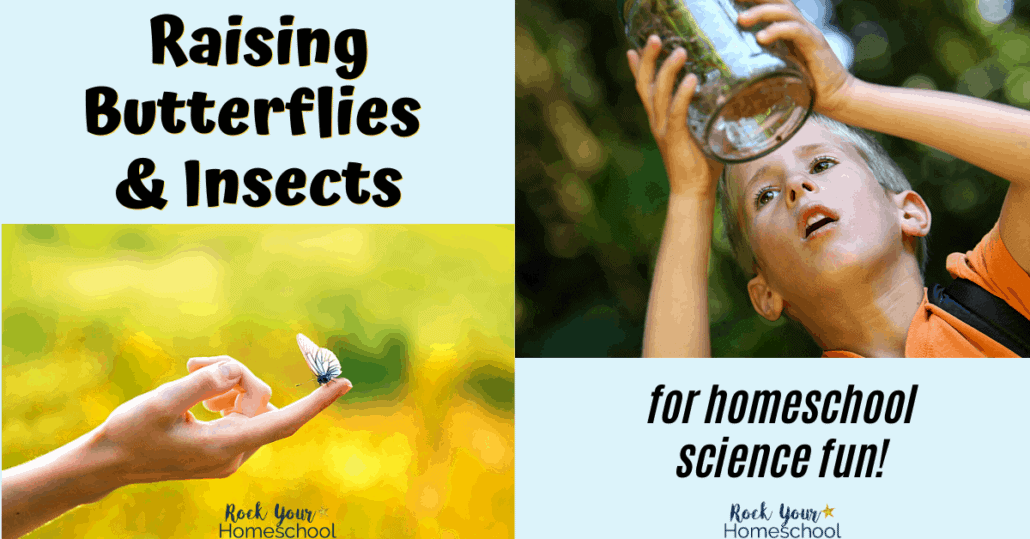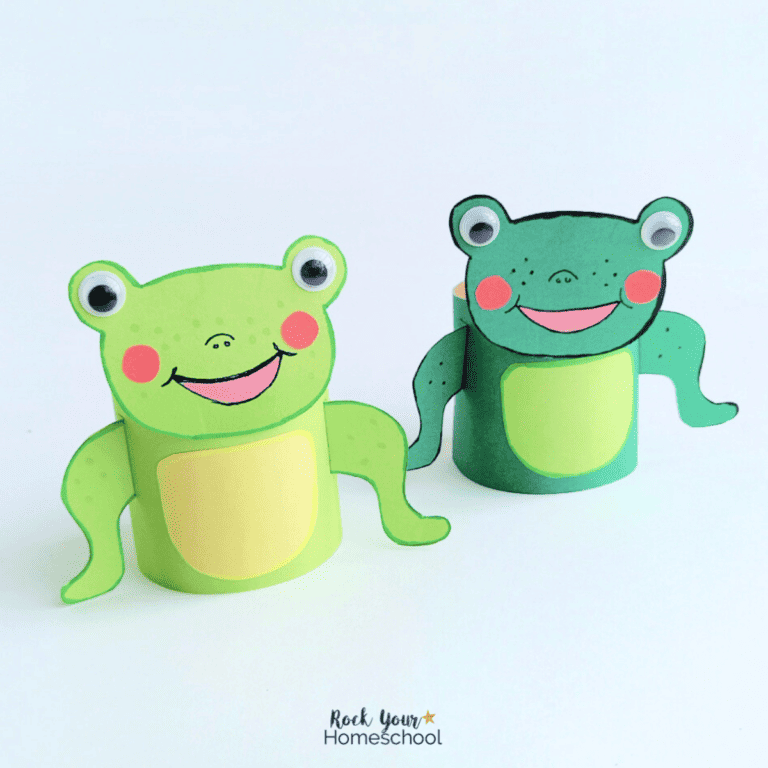Raising butterflies and insects at home are awesome activities for science fun with kids.
Check out these tips and ideas to help you get ready for enjoying a successful experience with these types of homeschool science projects.

Boost Learning at Home with These Special Science Projects
Raising butterflies, ladybugs, and even praying mantis are super cool Spring science activities for
homeschools and families.
These Spring science activities give kids the opportunity to:
- Observe the life cycles of insects and butterflies up close and personal
- Learn to care for other living creatures
- Experience what it’s like to do something positive for the environment
Raising butterflies and insects are new adventures that will be well worth the time and effort. These tips will help it be a successful experience for all 🙂

Tips & Ideas for Raising Butterflies & Insects at Home
Tip #1: If you’re new to raising butterflies and insects, you’ll want to start with the right container.
You can buy great kits that come with certificates to have live caterpillars or larvae for your project. These kits usually contain everything you need for a successful experience of raising butterflies and insects at home.
If you’re building your own set, you need to look for a container without holes large enough for baby insects to escape but that also has plenty of airflow to help provide oxygen and a safe growing environment. This Insect Collector’s Backpack has super cool tools to help.
Tip #2: Read about the insects you’re raising before you start. Learning as much as you can about the specific insects will allow you to provide them with the best care in each stage of life. By educating yourself about these insects and butterflies, you’ll be sure to have the proper food for each stage of development.
Tip #3: A few suggestions for storing and maintain your growing insects’ homes:
- Keep your insect house warm.
- Make sure to follow the recommendations for where you live when starting your project. Typically, warm weather is suggested for such endeavors.
- Don’t leave the container outdoors unattended, particularly at night.
- Avoid placing your insect house near a draft or cold area of your home.
- Don’t place the container too close to a heat source.
Tip #4: Insects can be sensitive to being tossed around. While it is fun to observe the insects you’re raising, don’t allow kids to carry around the insect house or pound on the sides. You can use this opportunity to talk about being mindful of others and how to treat others as you’d like to be treated 🙂
If you have young children that are not old enough to understand these concepts, it may be best to put your insect house in an area that can’t be reached for use only with adult supervision.

Making the Most of Raising Butterflies & Insects in Your Homeschool
Homeschooling has many amazing advantages, including being able to spend the time on fun and exciting learning activities, like raising butterflies and other insects.
Tips #5-9: Extend the learning fun with these types of science projects with these cool ideas:
- Have your child create and maintain a journal for this project. If your child already has a nature journal, simply add to it.
- Take pictures often to allow you to take a clear look back at the entire process, both during and
after you’ve raised and released your insects. Videos also make great opportunities! You can create an amazing time-lapse video with your child to help them really see the entire life cycle. - Provide your child with the tools to take a closer look without hurting the animals you are raising. A strong magnifying glass can be a great way to get a detailed look at your new pets. For eggs and shedding, you can use a microscope to get an even closer look at the wonders before you. Kids love using these tools to explore, making them a great investment for getting your children interested in science.
- Spend time reading, talking, and learning about your insects each day as they grow. These activities will
allow you to make the most of the learning experience with open discussions about observations and any questions that your kids may have. - Involve your child in helping to find the perfect habitat to release your insects when fully grown.
Insects have a relatively short life span and should be set free as soon as possible to enjoy the life they have. Plus, many insects that you can raise have the ability to help the ecosystem.
Tip #10: The release stage can be hard for kids when it comes time to let go. Chat about what you’ve learned about ideal habitats for your insects then work together to pick the right place. Discussing why that place is the perfect home for their insects can help relieve some of the stress of saying good-bye.

Bonus tip: If your homeschool enjoyed this type of science project this year, save your insect house (and other reusable parts of the kit) to use for another opportunity next year.
I’d love to know more about your experiences with raising butterflies and insects! Please share in the comments area below (and any other tips that could help others 😊).












